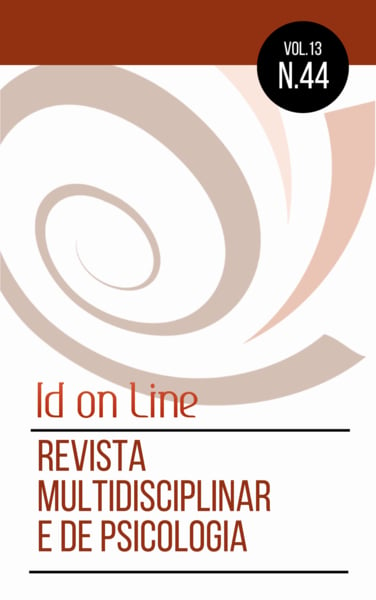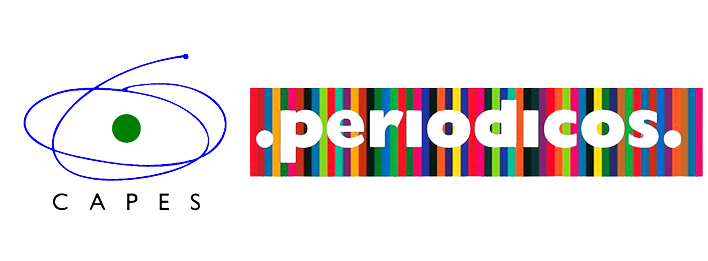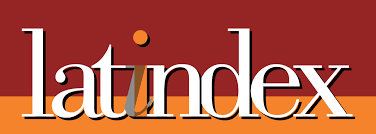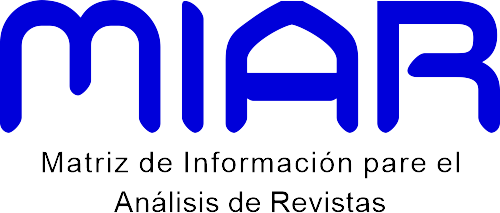Relação dos Fitoterápicos e Compostos Bioativos na Fertilidade e Infertilidade Humana / List of Phytotherapeutic and Bioactive Compounds in Fertility and Infertility
DOI:
https://doi.org/10.14295/idonline.v13i44.1342Palavras-chave:
Fitoterapia, Sexualidade, Fértil.Resumo
As plantas medicinais são conhecidas como uma fonte prolífica de metabólitos secundários que têm importante função durante a foliculogênese e esteroidogênese ovariana em muitas espécies de animais. Alguns metabólitos secundários podem atuar como antioxidantes em geral através de sua capacidade de eliminar espécies reativas de oxigênio (ROS) ou podem regular a produção hormonal ovariana. Em geral, essas propriedades são responsáveis pela função medicinal para tratar o distúrbio de infertilidade da mulher. Algumas plantas são constituídas de substâncias biológicas ativas que foram usadas para tratar a disfunção reprodutiva. No entanto, até recentemente, pouco se sabia sobre a implicação de plantas e / ou seus metabólitos secundários na foliculogênese e esteroidogênese in vitro. Com o desenvolvimento da tecnologia, há uma crescente implicação dessas substâncias na tecnologia de reprodução assistida (ART). A presente revisão destaca algumas plantas medicinais usadas no tratamento de desordens relacionadas à infertilidade. Além disso, fornece uma visão geral de ervas e seus compostos ativos com reivindicações para melhoria da atividade ovariana, mostrando assim sua implicação nos cuidados de saúde reprodutiva humana.
Downloads
Referências
AGARWAL, A.; MULGUND, A.; HAMAD, A.; CHYATTE, M. R. A unique view on male infertility around the globe Reproductive Biology and Endocrinology v.13 p. 37, 2015.
ALMEIDA, E. R.; MELO, A. M.; XAVIER, H. Toxicological evaluation of the hydro-alcohol extract of the dry leaves of Peumus boldus and boldine in rats. Phytother Res. V. 14, p. 99-102, 2000.
ARENTZ, S.; ABBOTT, J. A.; SMITH, C. A.; BENSOUSSAN, A. Herbal medicine for the management of polycystic ovary syndrome (PCOS) and associated oligo/amenorrhoea and hyperandrogenism; a review of the laboratory evidence for effects with corroborative clinical findings. journal of the International Society for complementary Medicine. v. 14, p. 511, 2014.
ARNOUS, A. H.; SANTOS, A. S.; BEINNER, R. P. C. Plantas medicinais de uso caseiro- conhecimento popular e interesse pelo cultivo comunitário. Espaç. saúde v. 6, n. 2, p. 01-06, 2005.
BOIVIN, J.; BUNTING, L.; COLLINS, J. A.; NYGREN, K. G. International estimates ofinfertility prevalence and treatment-seeking: potential need and demand forinfertility medical care, Hum. Reprod. v. 22, p. 1506–1512, 2007.
BORS, W.; SARAN, M.; MICHEL, C. Radical intermediates involved in the bleaching of the carotenoid crocin. Hydroxyl radicals,superoxide anions and hydrated electrons. Int J Radiat BiolRelat Stud Phys Chem Med. v. 41, n. 11, p. 493–501, 1982.
BRASIL. Ministério da Saúde. ANVISA. Portaria n° 48, de 16 de março de 2004. Diário Oficial da União, DF, 18 de março de 2004.
BRASIL. Ministério da Saúde. Secretária de Vigilância Sanitária. Portaria n° 116, de 08 de agosto de 1996. Diário Oficial da União, 12 de agosto de 1996.
CAMBIAGHI, A. Z.; CASTELLOTTI, D. S. Fertilidade natural. Instituto paulista de ginecologia e obstetrícia. v. 01, p.139, Brasil , 2004.
DAAR, A. S.; MERALI, Z. Infertility and social suffering: the case ofART in developing countries. In: Vayena E, Rowe PJ, Riffin PD,editors. Current practices and controversies in assistedreproduction. Report of a meeting on medical, ethical andsocial aspects of assisted reproduction. Geneva,Switzerland: World Health Organization. n. 3, p. 15–21, 2002.
GAUTHAMAN, K.; ADAIKAN, P. G. Aphrodisiac properties of Tribulus Terrestris extract (Protodioscin) in normal and castrated rats. Rev. Life Sciences. v. 71, n. 12, p. 1385-1396, 2002.
GONZALES, G. F.; RUIZ, A.; GONZALES, C.; VILLEGAS, L.; CORDOVA, A. Effect of Lepidium meyenii (maca) roots on spermatogenesis of male rats. Asian J Androl. v. 3, n. 3, p. 231-3, 2001.
HERINGER, A. P. A associação da ação antioxidante da vitamina E, vitamina C e vitamina A na melhoria da infertilidade masculina. v. 26, 2017.
JHA, U.; ASAD, M.; ASDAQ, B. M. S.; DAS, K. A.; SATYA, P. S. V. Fertilityinducing effect of aerial parts of Coccinia cordifolia L. infemale rats. J Ethnopharmacol. v. 127, p. 561–4, 2010.
JUNG-TAEK, K.; JOON, H. M.; JI-YEI, C.; SOL, J. P.; SU, J. K.; ISLAM, M. S. et al. Effect of antioxidant flavonoids (quercetin and taxifolin) onin vitro maturation of porcine oocytes. Asian Australas JAnim Sci. v. 29, n. 13, p. 352–8, 2016.
KILIÇGÜN, H.; ARDA, N.; UÇAR, E. Ö. Identification of longevity, fertility and growth-promoting properties of pomegranate in Caenorhabditis elegans. Rev. Pharmacogn Mag. v. 11, n. 42, p. 356-9, 2015.
KURZER, M. S.; XU, X. Dietary phytoestrogens. Annu Rev Nutr. v. 17, n. 14, p. 353–81, 1997.
KURZER, M. S.; XU, X. Dietary phytoestrogens. Annu Rev Nutr. v. 17, n. 14, p. 353–81,1997.
LARSEN, S. H.; WAGNER, G.; HEITMANN, B. L. Sexual function andobesity. Int J Obes. v. 31, n. 4, p. 1189–98, 2007.
LIU, F.; NG, T. B. Antioxidative and free radical scavenging activities of selected medicinal herbs. Life Sci. v. 66, p. 725–735, 2000.
LUO, Q. et al. Lycium barbarum polysaccharides: protective effects against heat-induced damage of rat testes and H2 O2 -induced DNA damage in mouse testicular cells and beneficial effect on sexual behavior and reproductive function of hemicastrated rats. Life Sciences. v. 79, p. 613- 621, 2006.
MOUNDIPA, F. P.; KAMTCHOUING, P.; KOUETA, N.; MBIAPO, F.; TANTCHOU, J. Effects of aqueous extract of Hibiscus macranthus and Baselaalba Linn. Immature rat testis function. Andrology in thenineties. In: International symposium on male infertilityand assisted reproduction. p. 21–4, 1993.
NG, T. B.; LIU, F.; WANG, Z. T. Antioxidative activity of natural products from plants. Life Sci. v. 66, p. 709–723, 2000.
RUIZ, A. L. T.G.; TAFFARELLO, D.; SOUZA, V. H. S.; CARVALHO, J. E. Farmacologia e Toxicologia de Peumus boldus e Baccharis genistelloides. Rer. Bras. Farmacogn. v. 18, n. 2, p. 295-300, 2008.
SKULA, K. K.; MAHDI, A. A.; PHIL, P.; AHMAD, K. M.; SHANKHWAR, S. N.; RAJENDER, S.; JAISWAR, S. P. Mucuna Prurients improves male fertility by its action on the hypothalamus- pituitary-gonadal axis. Fertility and sterillity. v. 92, n.6, 2009.
TELEFO, P. B.; MOUNDIPA, P. F.; TCHANA, A. F.; TCHOUANGUEP, D. C.; MBIAPO, F. T. Effects of aqueous extract of Aloe buettneri,Dicliptera verticillata, Hibiscus macranthus, and Justicia insularison some biochemical and physiological parameters ofreproduction in immature female rat. J Ethnopharmacol. v. 63, p. 193–200, 1998.
TELEFO, P. B.; MOUNDIPA, P. F.; TCHOUANGUEP, F. M. Inductive effectsof the leaf mixture extract of Aloe buettneri, Justicia insularis,Dicliptera verticillata and Hibicus macranthus on in vitroproduction of oestradiol. J Ethnopharmacol. v. 90, p. 225–30, 2004.
Downloads
Publicado
Edição
Seção
Licença
Os autores detêm os direitos autorais sem restrições, devendo informar a publicação inicial nesta revista, em caso de nova publicação de algum trabalho.









